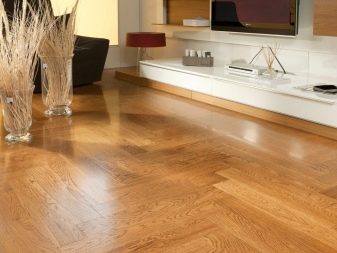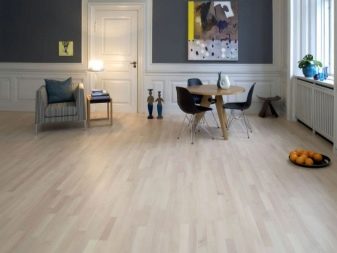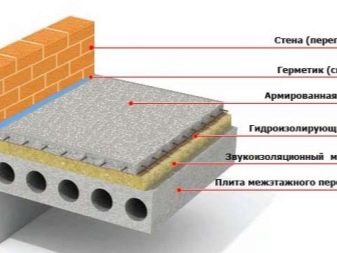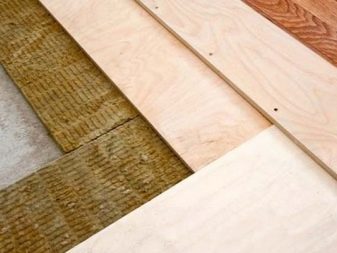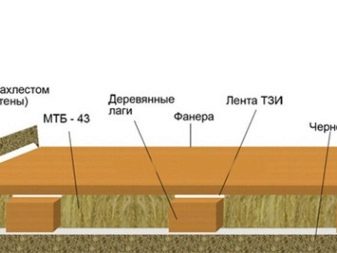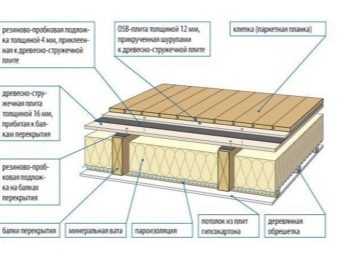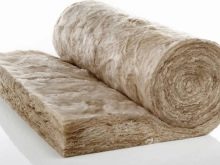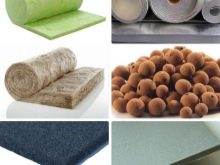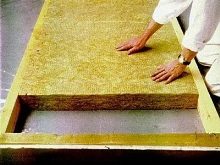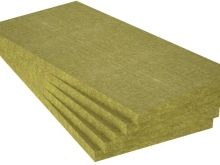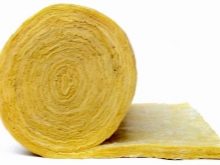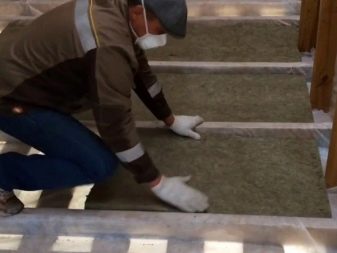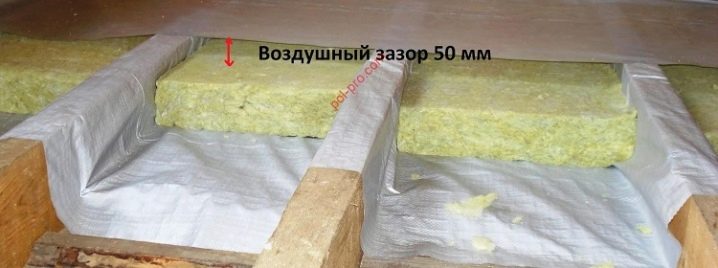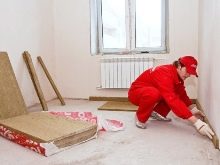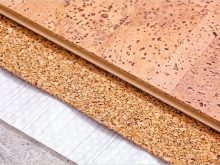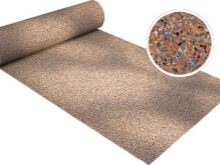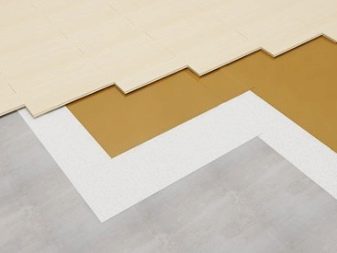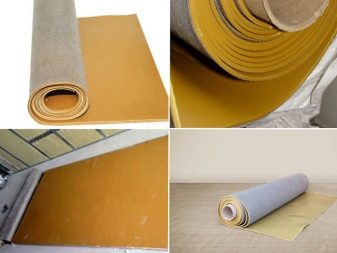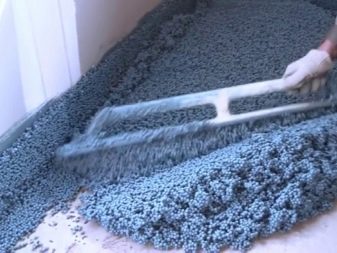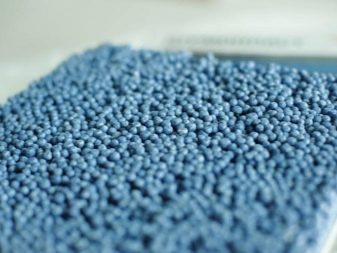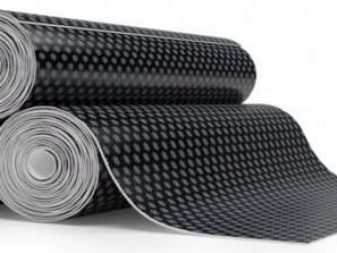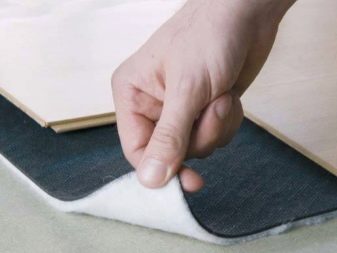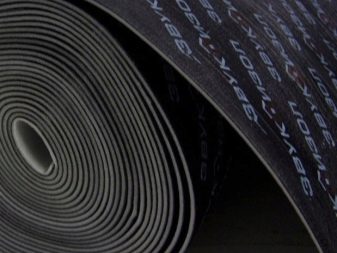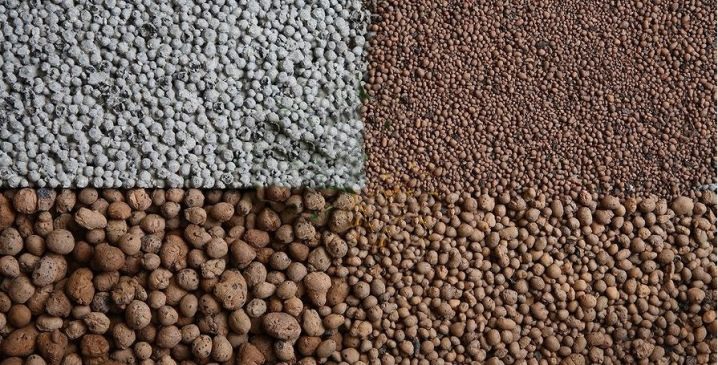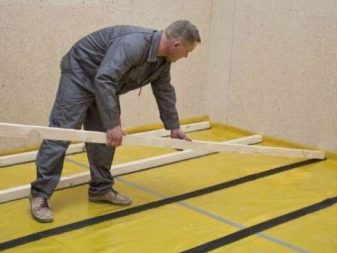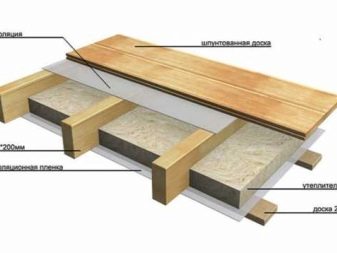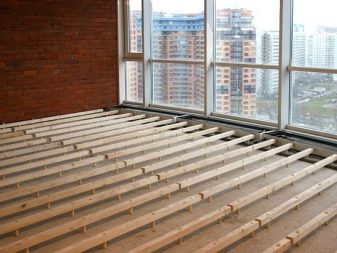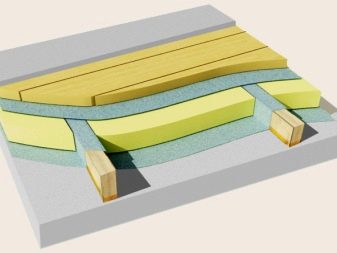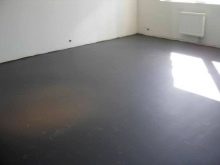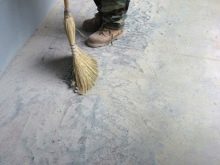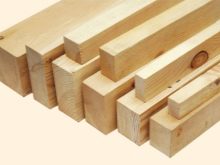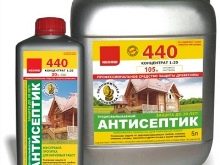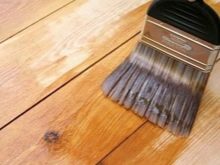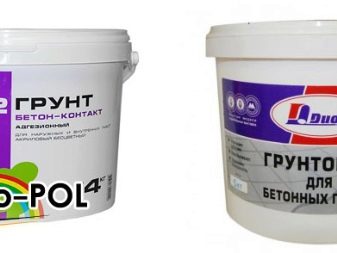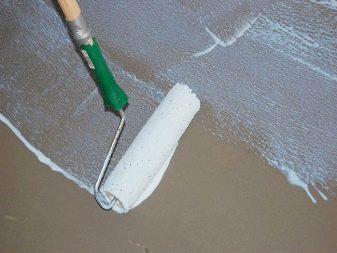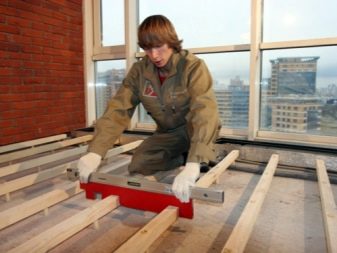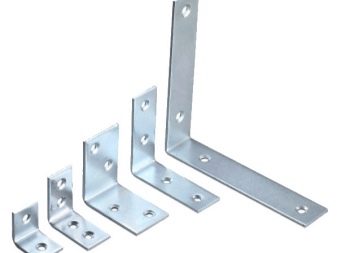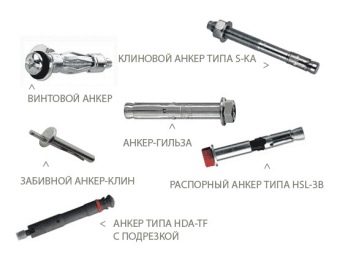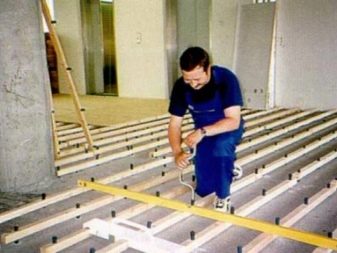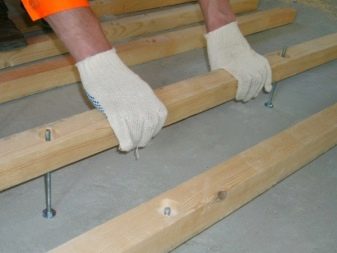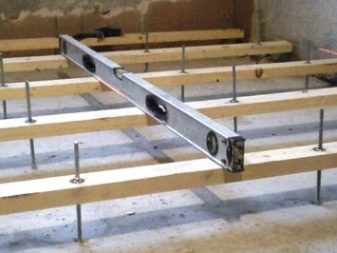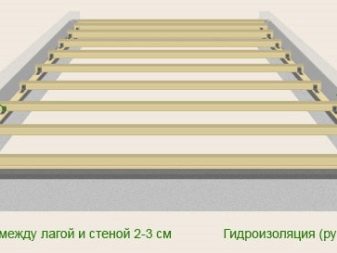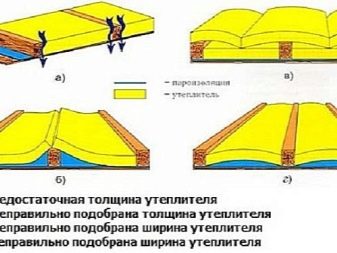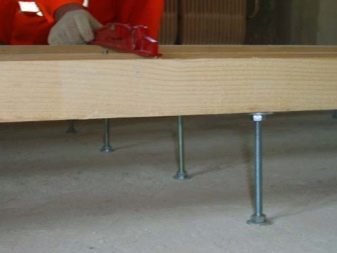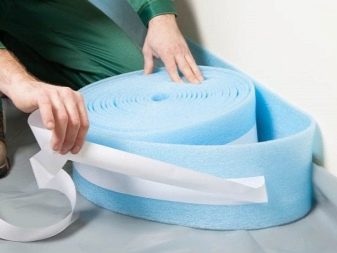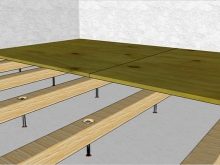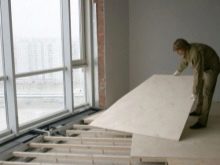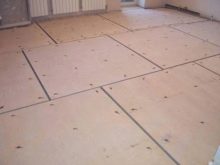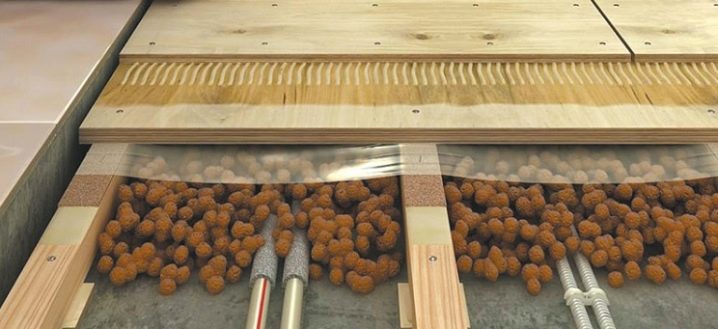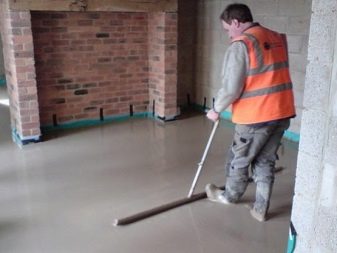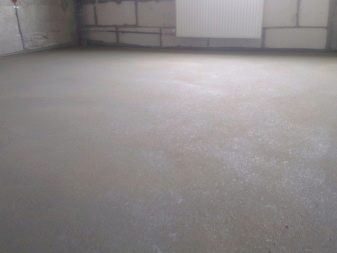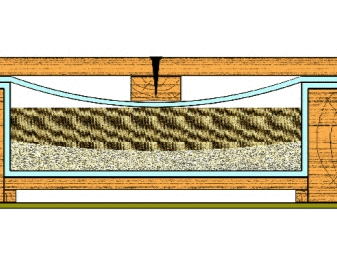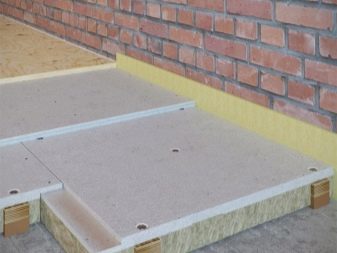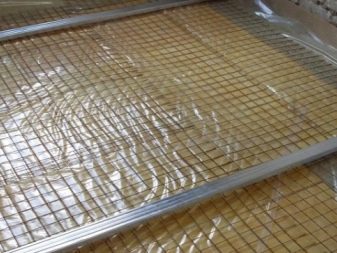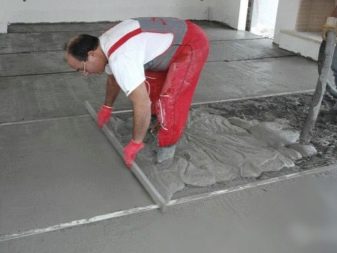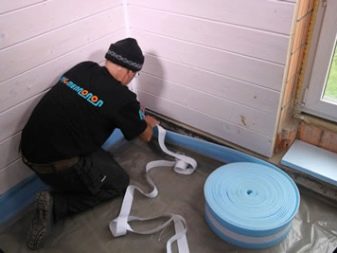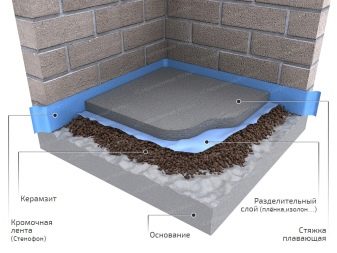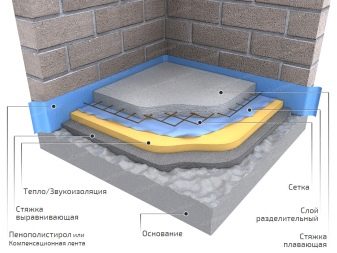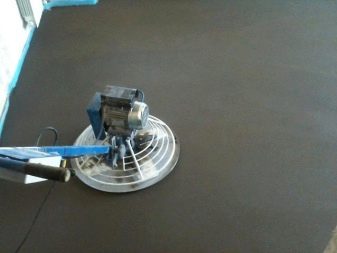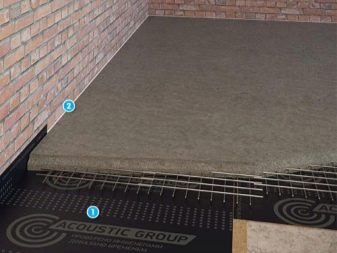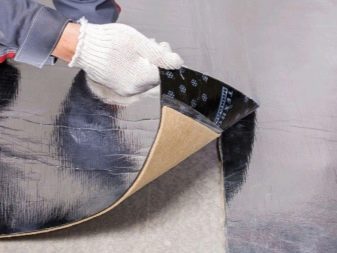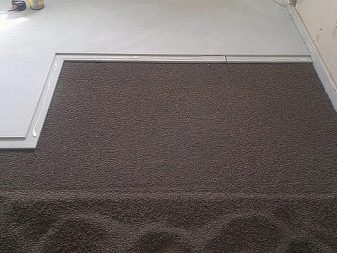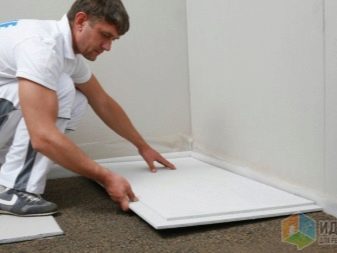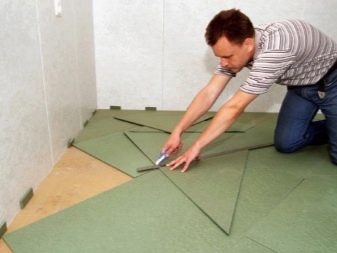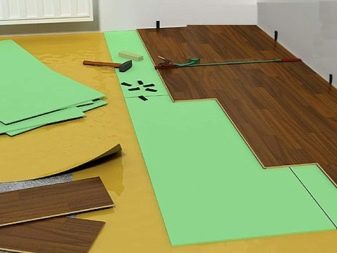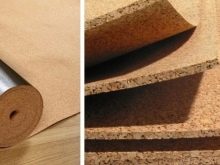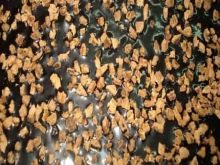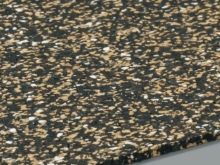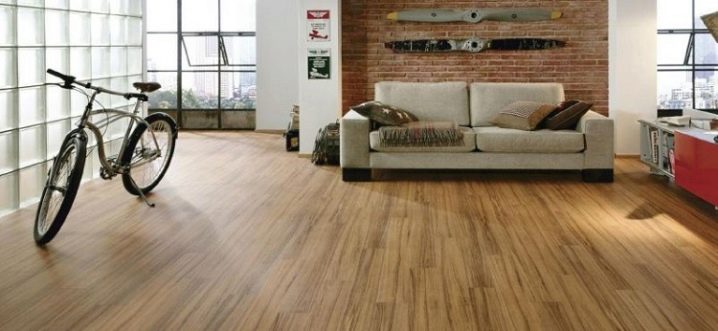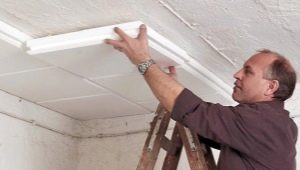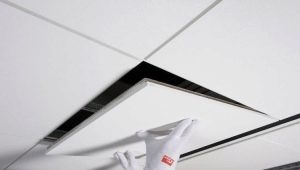Features soundproofing floor in the apartment
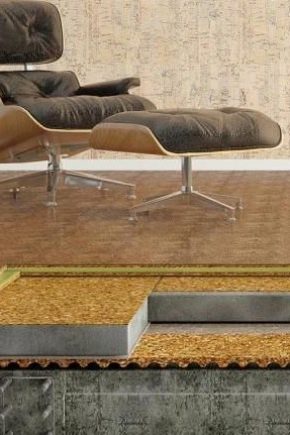
Loud-speaking neighbors below, their new TV, working on a full or their modern audio system, which does not allow the household to rest, is familiar to every urban resident. Not only proven building materials, but also new items in this segment allow to reduce noise. Which of them are recommended for purchase and are considered the best will be discussed below.
Special features
Noise insulation of the floor in the apartment can not only protect the home from unwanted sounds from neighbors, such as the cry of young children or the non-ending playing of musical instruments, but also reduce the noise from the use of flooring. Due to soundproofing, laminate flooring or parquet flooring will not creak.
Sound insulation materials often have insulating propertiesthat has a favorable effect on the room temperature. They are usually used in the house with overlappings, respectively, a massive board for a short period of operation will not crack, and the floor "will not float."
In addition, synthetic materials are not affected by mold and fungi, insects and microorganisms do not penetrate through them, and therefore, with the correct installation of the cockroaches and red ants can be forgotten.
Options
A silent room is not the ultimate dream, but an achievable reality. Since the soundproofing layer can be laid in three ways - on the logs (or on the beams of a wooden hut), pre-pour the concrete screed, or even without a screed.
In wooden houses, to eliminate the negative impact on the overlap, the concrete screed is not recommended. Otherwise, the damage to the ceiling and walls of the neighbors will result in a large amount, and in the most terrible scenario, the overlapping may not withstand and collapse under the weight of the screed.
If the base is ideally smooth, then suffer with cement-sand mixtures to nothing,Yes, and it is not profitable to install logs, it is enough to use modern building materials, then the result will not take long to wait.
Modern materials
Modern soundproofing building materials are used even when arranging a recording studio. Since even the best amplifiers are powerless in front of them, they will be able to cope with any noise in their everyday life.
Soundproofing properties have flooring - linoleum, carpet, and the usual carpet with a thick pile, but, unfortunately, this is not enough for a modern audio system.
Most often, mineral wool is bought for these purposes - it is easy to lay, it weighs little, has a relatively low cost. Since there are voids between synthetic fibers, the noise is “delayed” in them, the household is practically not heard.
This building material is perfectly combined with wood and metal, the main thing is that before laying it is not wet, otherwise the tree will begin to rot, and metal guides, including the sewage system, will rust.
Because of the light weight of the pressure on the ceiling is not, respectively, the foundation of the house, its walls will be nothing.So, the mineral wool can be safely laid in wooden houses and in "Khrushchev". Mineral wool is not combustible, thanks to which it is recommended for use even in children's institutions, but, unfortunately, it will not be possible to use some of its varieties in rooms with high humidity. In the case of moisture, the material will become unusable.
Mineral wool is available in three varieties. - It is stone, slag and glass wool. Only the manufacturer has the right to decide what thickness his building material will be, what coefficient of heat resistance to have, there are no clear standards for this. In the sale of mineral wool is found either in rolls or in plates.
Stone wool withstands high temperatures (up to 500 degrees). This soundproof material is made from molten rock. In construction, it has been used for over a hundred years.
Basalt rock wool has the best sound insulation performance. In addition, it is also made from an environmentally friendly product. In its composition there is no formaldehyde harmful to human health. Experts recommend it for residential premises, it has good indicators of hydrophobicity, vapor permeability, fire resistance.
In addition, it is also quite durable, can withstand heavy loads - massive furniture, large household appliances. By the way, mice and rats do not gnaw basalt cotton wool; this sound insulator is not populated by harmful microorganisms. Of the minuses, the non-democratic cost is noted, since its production is labor-intensive, as well as the occurrence of dust, which is not recommended to breathe, therefore it is better to wear a respirator or gauze bandage when working on the face.
The joints that occur between the plates, it is desirable to seal the construction of foam, otherwise noises will fall into the apartment.
Slag is produced from the fibers of blast furnace slag, so there is a high probability of residual acidity, moreover, this cotton wool itself is caustic. It absorbs moisture easily, so it is not suitable for bathrooms, kitchens and bathrooms.
Possesses causticity and glass wool. Many Soviet people remember that the pipes in the courtyards were lined up to her. If you come into contact with it without self-defense means, first of all, without gloves, then an allergic reaction and cuts are guaranteed. In critical cases, hard fibers can damage the respiratory system and organs of vision. Unlike stone wool, it needs to be mounted in a batten.
Unfortunately, during the period of operation the mineral wool is caking. A similar disadvantage has another sound insulating material - polyurethane foam. Because of this, noise reduction is reduced.
Often this building material is used as a substrate for the finishing floor covering. In construction shops it is sold at a low price, it has a low weight, it is easy to fit. It is not used for wet rooms, because there is a high risk of the population of moldy mushrooms, which can negatively affect the health of not only young children, but also adults. The fastening process is carried out using special glue.
Some manufacturers, caring for their customers, equip foam rubber with self-adhesive surface. The disadvantages include the flammability of the material, followed by the release of harmful substances, as well as destruction from high temperatures, including sunlight.
Cork and rubber-coated substrate is available in roll and sheet form. It will last several decades in combination with a waterproofing layer, otherwise from the interaction with moisture will quickly become useless.In its composition there is a natural material - cork crumb, which has decorative features, it is an environmentally friendly durable material. Keep in mind that installation should be done with care, as there is a high probability that the web will break.
Least of all as a sound insulation recommend using polystyrene foam. Despite its advantages, mice and rats do not gnaw it, microorganisms and fungi do not damage, it has good hydrophobic properties, but with regard to the level of noise isolation, this indicator is rather low.
In recent years, the product under the brand Teksaund. Despite its thickness (less than 4 mm), it copes with the task. Its heavy mineral base is suitable only for concrete foundations, as it can adversely affect hardwood floors. Due to its high density, the best sound absorption effect occurs.
Teksaund has excellent elasticity, can stretch, any adult will cope with the installation, it is perfect for unheated rooms, does not rot from moisture and moldy mushrooms, fire resistant, has a long service life.But keep in mind that its installation should be combined with a thin insulation and without a substrate it does not fit.
For asymmetrical rooms and for “floating floors”, an ideal variant is Shumoplast - a combination of elastic granules with rubber and acrylic. It does not require waterproofing, it has virtually no shrinkage, it is suitable for uneven grounds. Easy to install, the manufacturer guarantees a long service life, environmentally friendly. The downside is the drying period - it is 24 hours.
Acoustic Panels "Audec" at the production stage sheathed with natural wood, available in several color shades. Due to the ease of installation, the installation is very fast, the material is environmentally friendly, but, unfortunately, is sold at a high price.
The sound-proof membrane is suitable for rooms in which the temperature varies from a steady minus to a hot plus, due to its elasticity, even with minus indicators, the material does not crack. Possesses environmental friendliness, long service life. Fastening is done with glue.
Two-layer material "Shumoizol" produced in roll form.In its composition - bitumen and non-woven base. They have excellent vibration isolation. Noise isolation does not deteriorate when compressing "Shumoizol", and a thin layer practically does not reduce the height in the room. Due to the high hydrophobic properties, this soundproof building material does not require additional waterproofing, has a long service life, is environmentally safe.
"Zvukoizol" is a foamed polyethylene on a bitumen base, is available in small rolls. Due to the bitumen, additional waterproofing material is not required, it will last a long time, and because of the democratic cost has almost no competitors.
In dry form, expanded clay as sound insulation is of little use, but in combination with a cement screed, the result can be positive. Sand is considered to be a good sound insulator, but in a city apartment it will negatively affect floors and the foundation of a prefabricated house.
Useful tips from professionals
In order to soundproof the neighbors from below, it will be necessary to properly stack the previously described building materials.Of course, you can call specialists, but in order to save, it is better to do the installation yourself.
As noted earlier, There are three ways to lay the soundproof layer. - on lags, without screed and under a concrete screed. Which one to choose is up to the owner of the apartment only. Within this section, all three options will be considered.
By lag
First of all, it is necessary to prepare the foundation. To do this, dismantle the flooring - linoleum, parquet, laminate. The easiest way to clean a modern laminate, thanks to the lock connection, disassembly can be done up to 5 times. Unfortunately, linoleum or parquet in most cases, after dismantling, cannot be re-laid. If the topcoat is a massive board, then its dismantling should be done with full responsibility so as not to spoil the expensive building material.
Construction work is carried out in special clothes, protecting eyes with glasses, respiratory organs - with a respirator or gauze bandage. Do not forget about gloves, thanks to them you can prevent the appearance of corns and cuts. Getting close to the concrete base, it is necessary to correct its defects - to remove the protrusions, to seal up the depressions and cracks.Small cracks can be widened with a perforator, after which they can be sealed with a sealant or other elastic finishing material.
Keep in mind that around the perimeter of the room you need to fasten the polystyrene tape, it is needed to minimize vibration.
Usually, after preparing the foundation, the required amount of sound insulator is calculated. But if mineral wool is chosen in this capacity, then it is more expedient to first fix the beams, and only then perform mathematical operations.
Remember to wait until the concrete base is completely dry. For example, if the cracks were sealed with an elastic composition, only after the set time can the next stage of work be carried out.
No dust or dirt anymore. Professionals usually use a construction vacuum cleaner for this procedure, but for home use a regular vacuum cleaner and wet cleaning is sufficient. Special attention is paid to the corners. As a rule, dirt accumulates there, which in the future may make itself felt by an unpleasant smell or damage to the sound insulator.
Coniferous wood is perfect as a log.while its moisture content should not exceed 19 percent. The building material should get used to the humidity and the temperature of the room, for this it is left for several days in the room where the repair is planned. If the boards begin to bend, then they should be returned back to the store.
While the floor dries after general cleaning, beams are processed. This is a very important stage, since it is not a secret to anyone that concrete can release steam, respectively, condensate is formed, which will lead to rotting of the tree, populating moldy fungi on its surface. Pests can also spoil the product - insects and microorganisms. It is also important fire treatment products.
Usually, experts recommend a two-time treatment, and the second layer is applied only after the first is completely dry. Accordingly, the installation lag must be performed after the second layer has dried. Since the processing is made of the strongest chemical materials, it must be performed in a well-ventilated area, on the street or in the entrance.
The concrete base is primed.Acrylic primer is universal, economical and is sold at affordable prices. As a rule, it is used for interior work when laying the sound insulation layer.
After that, a waterproofing layer is applied on the base. These can be special mastics, rolled substrates, compounds penetrating the concrete base and ordinary polyethylene. It is not forbidden to use roofing material or old linoleum. On top of the waterproofing layer is laid substrate or slats for fixing the log.
Hydrophobic materials also serve as a shock absorber. For example, linoleum does not sag, which means that during the operation of the floor covering there will be no backlash and creaking. Directly fastening log is carried out in two ways. The first method is fixing with the help of hardware - dowels, anchors. The second method is using vibro-hangers. And if the first method is demanding for differences and the base should ideally be smooth, then the second method is less demanding.
The floor level is set using the level. At home, evenness can be checked at the building level.After marking the first beams are laid along the walls of the room, the fastening is made using dowels, screws, anchor fasteners. Additional mounting is carried out using corners or building foam.
The most commonly used fastening with dowels, for this purpose, a through hole is drilled in the board with the capture of a concrete base. A plastic cork is inserted into the concrete. It will only screw the screw. The next hole is made at least after 40 cm. Experts do not recommend taking a bigger step, then the fixation will be fragile, at the same time they are not advised to “part” - this can destroy the tree.
The length of the hardware should be equal to the hole. If you buy fasteners with thread not the entire length of the screw, then fixing the beam with the base will be stronger. Durable and secure mount and provide anchors. They, like self-tapping screws with a neck, attract the beam to the concrete base, due to which the beam remains motionless for a long time, and the additional rigidity of the structure does not lead to play.
Anchors are often used to attach heavy structures to the wall, but they also do not refuse them when creating sound insulation for the floor.The process is not much different from that described earlier, only in the board it is desirable to make countersink to hide the anchor cap. For a standard room, four anchor bolts for one beam are enough to fix it. The diameter of the anchor should be equal to 10 mm, and the length - 45-200 mm, depending on the thickness of the lag, while the anchor bolt is fully led into the concrete.
Installation of wooden beams to the concrete base with the help of galvanized metal corners in recent years is used more often, this is due to the rigidity of fixation and a significant time saving. Since the fixation is carried out without moving the lag, it is enough to attach one part of the corner with screws or anchor bolts to the beam, and the other to the floor.
Do not forget to leave a gap between the wall and the board - it should be equal to 1.5 cm. In parallel with the first row, the second and subsequent rows fit. The lattice windows must be dimensioned in accordance with the dimensions of the sound insulator - mineral wool. The building material should lie tightly inside, as if there are gaps, then the outside noise will get into the apartment.
If the beams are well dried, it is allowed to create a so-called “floating” floor, in which fixing of the flooring with bearing structures is not performed.Otherwise, the boards may "swell" and the floor will "go", and the floor will become unusable.
An alternative method of fastening lag to the base is an adjustable system. Although it is sold at a high cost, but thanks to it, the process of leveling and getting rid of drops is easy and simple.
Replacing the anchor bolts stands plastic rackIt is screwed to the base with dowels, and a screw is inserted directly into the wood. The height of the beam can be adjusted. After setting the desired size protruding parts are cut off.
After the sound insulator is tightly laid in the batten, it is necessary to lay a plywood layer on top of it. But before that you need to put a vapor barrier layer. Some use moisture-proof gypsum board or gypsum-fiber sheets as flooring. By the way, these building materials themselves are able not to let other sounds into the room.
Professionals recommend gluing a layer of damping tape according to the level of plywood laying. This will protect the plywood from touching the wall; accordingly, there will be no vibrations.
The thickness of the plywood should not be less than 16 mm.After the first layer is laid, all seams and joints are sealed with sealant. Silicone perfectly copes with this. Then the second plywood layer is 18 mm thick, the joints should not coincide with the joints of the first layer. This will make the floor durable and protected from extraneous noise.
Keep in mind that if you have to lay the wires in the crate, they must first be insulated. The plinth is mounted either to the flooring or to the wall. If you fix it to the beam, it will become a source of noise penetration.
Sound insulation material must comply with quality standards. Before purchasing, it is important to request supporting documents from a sales assistant. No need to buy a sound absorber from questionable sellers, it is fraught with not only the loss of money, but also health.
Under the concrete screed
As in the case of laying the noise insulation layer on the lags, in this embodiment, the preparation of the base is initially required. To this end, not only seams and joints are sealed, but also special attention is paid to gas pipes and a drainage system.
Sometimes, in order to reduce the weight of the concrete base and get rid of large drops, the old tie is dismantled to the floor. To do this, use a punch, crowbar and a nail puller.It should be broken off in small pieces to make it easier to transport construction waste to containers.
For these works may require permission from regulatory authorities, do not neglect this, otherwise there is a possibility of a house collapse.
Concrete dust settles not only in the room where repairs are made, but also scatters throughout the apartment, so before starting work you need to lay the floor in the next rooms, curtain appliances and furniture with cellophane, close the gap between the floor and interior doors with a wet towel.
After the base is dismantled, it must be cleaned of debris. Neither dust particles, nor mote should remain. To do this, experts advise to vacuum the base several times, additionally walk on the surface with a wet cloth and wait for drying.
On the perimeter of the room is glued dumping, including through the pipes. For good fixation, adhesive tape is required. As for the height of the damper belt, it should be greater than the height of the future cement screed. To perform the work you will need a concrete mixer, but you need to take care of this in advance.
An important step in the “wet” screed is the installation of a waterproofing layer. If this is not done, the liquid solution will “go” to the neighbors through the gaps, which will lead to the damage of their property and to the subsequent compensation of damage.
Waterproofing is necessarily fixed above the dumpers. Tight grip is provided by adhesive tape. Remember that some waterproofing materials manufacturers advise to overlap (up to 20 cm).
The next stage is the installation of noise insulation. For this purpose shumoplast, basalt fiber is suitable. It is important that the material does not change its properties and qualities when interacting with moisture. Keep in mind that building materials, laid without joints, better cope with the task.
The reinforcing mesh is laid on top, but do not forget about its fixation. Exposed lighthouses. In their quality can act metal, fixed to the base with a screed. Their height is approximately equal to 40-45 mm, depending on the thickness of the screed. The pitch between beacons is determined by the length of the building level or rule.
Filling cement screed is made only after the drying of the composition holding the beacons.Cement, which is suitable for this work, is labeled M-300. Alignment is carried out using special tools.
It is important to wait for the surface to dry at room temperature and with constant humidity, otherwise the cement screed will crack after a while. Subsequently, the floor is treated with a grinder.
The protruding ends of the damper tape are cut off with a clerical or construction knife. After that, it will remain to fill the surface with a special sealant, which is able to delay the vibration transmitted from the floor to the wall.
Soundproofing is also used in a “semi-dry” tie. It dries faster, but at the same time the risk of cracks on the surface of the concrete base is greater than in the "wet". The procedure is not much different from that described above, so repeating the same is inappropriate. I just wanted to note the fact that the fastening of lighthouses with hardware is fraught with the appearance of vibration bridges. This will negatively affect noise insulation.
Unlike the first method, in the second the first layer of the screed is laid and only after that the reinforcing meshwhich after fill in the second layer.By the way, as a soundproofing, you can use expanded clay.
The remaining “dry” screed has a great advantage in comparison with its predecessors, it is a light weight that does not adversely affect the floors and the foundation of the panel house. Yes, and a large amount of dirt with this method is not formed. But this method is demanding on the evenness of the base.
A vapor barrier is placed over the base surface. Laying is carried out overlap, the joints are glued together with building tape. The vapor barrier must be fixed to the wall above the planned thickness of the backfill.
Along the perimeter of the premises allowed dumpentu. It is important that its level coincides with the level of the future sex. Damper tape wrapped ends of the drain and gas pipes. This is done to ensure that construction materials could not harm the floors and communication system.
The next point is the installation of the sound insulation layer. Such products as "Zvukoizol" and "Shumoizol" have well proved themselves. Laying is carried out with an overlap, for additional fixing the joints along the entire length are glued with a building tape.
After that, you will need to fill the base with expanded clay in combination with the sand mixture. They are sold in hardware stores marked "for dry floors." The alignment is carried out and verified by the building level. For the right backfill, lighthouses are set up, which are gradually rearranged.
Instead of a plywood layer, gypsum-fiber sheets are attached. They are laid, starting from the interior door, gradually moving towards the window. At the edges of the building material is applied mastic, which provides a good fixation, in addition GVL is screwed with a screwdriver and screws. The distance between the self-tapping screws should not exceed 30-35 cm. In order for the floor to be even, the heads of the hardware should be embedded in gypsum-fiber sheets.
Experts advise to putty the formed joints and holes. Thanks to this extraneous sounds will not fall into the room. It only remains to lay the finish - it can be laminate, linoleum, parquet board or ceramic granite.
Without screed
Unfortunately, the methods described above significantly reduce the height of the ceilings in the room, and if you also install suspended or suspended ceilings, then there will be no free space in the room. With such a problem is most often encountered by the owners of apartments in houses of Khrushchev.The height of the ceiling in the "Khrushchev" is usually equal to 2.5 m.
The way out, of course, is - laying a new finishing coating. To do this, dismantle the old flooring - linoleum or cracked parquet. The base is cleaned and processed as previously described.
Swings should not be greater than 2 mm, otherwise the floorboard will fold. Laminate is also deformed, if, of course, it is they who will serve as a new floor.
As a substrate, you can use building materials, which has soundproof qualities.and good thermal conductivity. Such a universal substrate "does not steal" additional centimeters. Such construction materials include cork, bitumen-cork sound insulator, as well as foamed polyethylene, polystyrene foam and polyurethane on the foil.
The sound insulation layer is laid along the wall, from which the installation of the floor covering will begin. The substrate must be laid from the edge of one wall to the edge of another, there should be no gaps.
The seams are necessarily glued with a building tape. As an alternative, you can use ordinary tape or staples from a furniture stapler. By the way, thanks to the stapler, this stage can be completed in a short time.But keep in mind that metal projections can touch the laminate. Because of this, the likelihood of unnecessary cod is high. In other words, fighting with one problem, you can create your own another.
Due to the fact that professionals do not advise to walk on the substrate, the next row is covered with some time shifts until a laminate or floorboard is laid.
In conclusion, I would like to note the fact that modern building materials can not only protect the room from extraneous noise - a loud TV, noisy neighbors from the bottom, their musical systems and instruments, but also save free space in the room. With the right choice of sound insulator, damage to floors or the foundation can be avoided.
For how to make noise insulation of the floor in the apartment, see this video.
